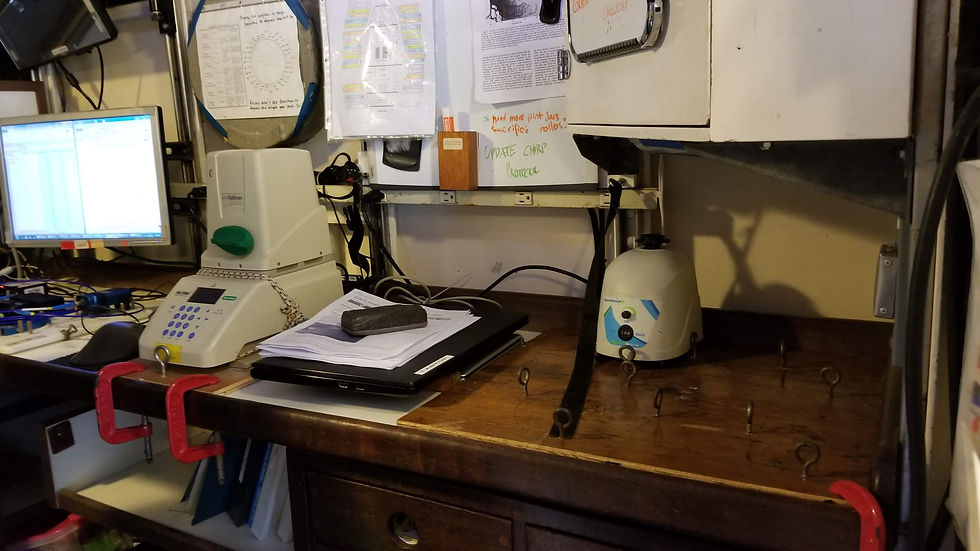
Past: Sea Education Association
As an Assistant Scientist for Sea Education Association, I trained undergraduates in oceanographic and molecular research as well as proper laboratory techniques. Additionally, I helped collect data for various projects including a Hydroid analysis, and Sargassum/Sargassum motile fauna analysis.
Hydroids Analysis (Aglaophenia latecarinata)
Hydroids are a type of small hydrozoa, closely related to jellyfish. These species are often solitary with the polyp attached directly to substrate. In the North Atlantic Ocean, A. latecarinata has been found to attach to floating Sargassum, a free-floating species of macroalgae that never anchors itself to the seafloor. During multiple research cruises from the Caribbean to New England, Sargassum was collected an analyzed for hydroid species and distribution. We discovered that A. latecarinata found on different species of Sargassum had different genetic structures, indicating distinct populations.
Motile Fauna
The Sargasso Sea is a region in the North Atlantic Ocean bordered not by land but by various ocean currents. These currents work to trap floating Sargassum which acts as a resource and natural refuge for various organisms, including 13 species endemic to floating Sargassum itself. Three distinct species of Sargassum can be found in the Sargasso Sea, each with different morphology and physical characteristics. In a multi-year project, clumps of different Sargassum species were collected and all mobile fauna (organisms not attached to the substrate in any way) were removed, counted, and identified. We found that the more morphologically complex Sargassum species supported the highest taxon richness and that, in recent years, a previously rare species of Sargassum (Sargassum natans VIII) has become increasingly dominant in the region.
Oceanographic & Molecular Research
Students were trained on the successful deployment and retrieval of Carousel Niskin Water Samplers, CTD's, Neuston nets, McLane Water Pumps, and deep 1m or 2m collection nets. Students were also taught molecular techniques such as DNA extractions for collected tissue samples, PCR, gel electrophoresis, and DNA sequence analysis.
Project Gallery







